May 31, 2024
Prelims Pointers
May 31, 2024
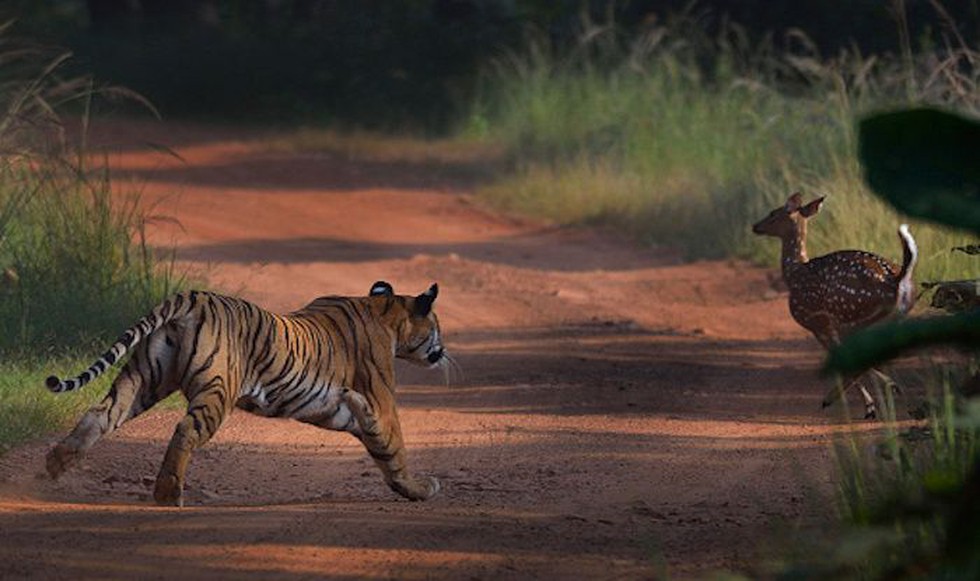
About Tadoba-Andhari Tiger Reserve:
- Location: It is located in the Chandrapur district of Maharashtra.
- It includes Tadoba National Park and Andhari Wildlife Sanctuary.
- It is the largest and oldest Tiger Reserve in Maharashtra.
- The total area of the reserve is 625.4 sq. km.
- The origin of the name "Tadoba" lies with the name of the god "Tadoba" or "Taru", worshipped by the tribes that live in the dense forests of the Tadoba and Andhari regions. "Andhari" refers to the Andhari River that meanders through the forest.
- Corridor: The reserve has corridor linkages with Nagzira-Navegaon and Pench Tiger Reserves within the State.
- Biogeographically, the reserve falls in the Central Plateau province of the Deccan Peninsula.
- Vegetation: Southern Tropical Dry Deciduous
- There are two lakes and one waterway in the reserve, Tadoba Lake, Kolsa Lake, and the Tadoba River.
- Flora: Bamboo, Teak, Ain, Bija, Dhauda, Haldu, Salai, Semal, and Tendu. Bamboo and Teak dominatethe reserve.
- Fauna:
- The notable faunal species include the tiger, leopard, sloth bear, wild dog, gaur, chital, and sambar.
- As many as 280 species of birds are found, apart from reptiles (54 species), amphibians (11 species), and fishes (84 species).
Prelims Pointers
May 31, 2024

About External Commercial Borrowings (ECBs):
- ECBs refer to the borrowing of funds by Indian companies from foreign sourcesin the form of loans, bonds, or other financial instruments.
- Purpose: It can be used to finance a variety of purposes, including the expansion of business, the acquisition of assets, and the repayment of existing debt.
- Source of ECBs: ECBs can be obtained from a variety of sources, including foreign banks, international financial institutions, and foreign subsidiaries of Indian companies.
- ECB can be in the form of rupee-denominated loans, which are repaid in Indian rupees, or foreign currency-denominated loans, which are repaid in a foreign currency.
- Regulation: ECB is subject to regulatory oversight by the RBI, which sets limits on the amount of ECB that Indian companies can obtain and the purposes for which it can be used.
- The ECBs fall under the umbrella of RBI regulations as postulated under the Master Direction - External Commercial Borrowings, Trade Credits, and Structured Obligations (Master Direction), and the Foreign Exchange Management Act, 1999 (FEMA).
- ECBs should adhere to criteria like minimum maturity period, maximum all-in-cost ceiling, permitted and non-permitted end-uses, etc.
- As of today, there are two paths to raise funds by employing ECBs: the approval route and the automatic route.
- There are a variety of eligibility regulations created by the government for availing of finance under the automatic route.
- These regulations are about amounts, industry, the end-use of the funds, Companies that desire to raise finance via ECB must meet these eligibility criteria; thereafter, funds can be raised without needing approval.
- The approval route, on the other hand, mandates that companies which fall under certain pre-specified sectors must obtain the RBI's or the government's explicit permission, prior to raising funds through ECB.
- As per RBI guidelines, all entities except a Limited Liability Partnership are allowed to raise ECBs.
- Benefits:
- ECBs provide an opportunity to borrow large volumes of funds.
- The funds are available for a relatively long term.
- Interest rates are also lowercompared to domestic funds.
- ECBs are in the form of foreign currencies. Hence, they enable the corporate to have foreign currency to meet the import of machineries etc.
- Risks:
- Exchange rate risk:Fluctuations in the value of the Indian rupee against foreign currencies can affect the cost of repaying the loan.
- Sovereign risk: The ability of a foreign government to repay its debt can affect the creditworthiness of foreign lenders.
- Credit risk:Foreign lenders may not have the same level of protection as domestic lenders in the event of default.
- Regulatory risk: Changes to government regulations or policies related to the ECB can affect the availability and cost of borrowing.
Prelims Pointers
May 31, 2024
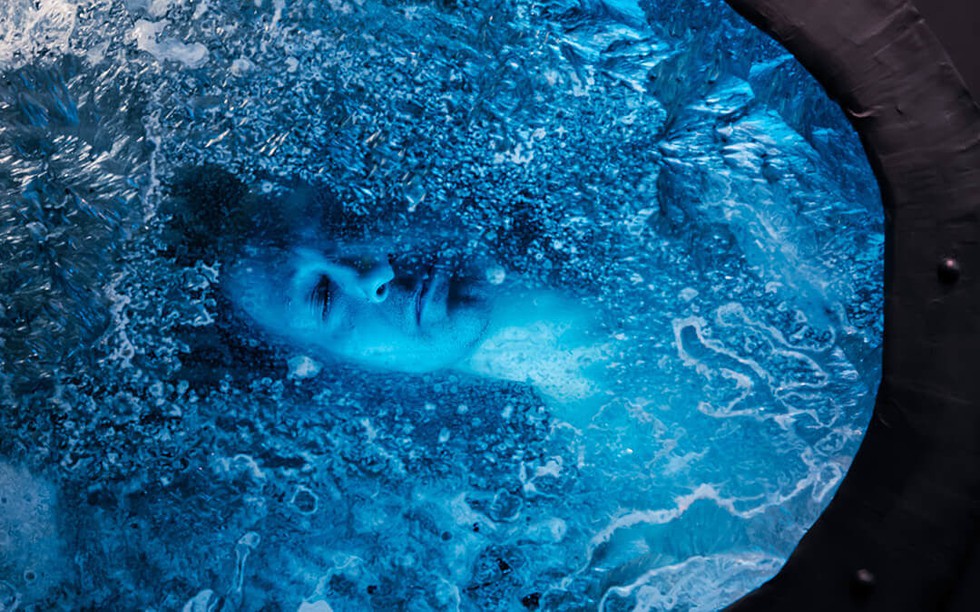
About Cryonics:
- Cryonics, the practice of freezing an individual who has died, with the object of reviving the individual sometime in the future.
- The word cryonics is derived from the Greek krýos, meaning “icy cold.”
- It is an effort to save lives by using temperatures so cold that a person beyond help by today’s medicine can be preserved for decades or centuries until a future medical technology can restore that person to full health.
- A person that is held in such a state is called a “cryopreserved patient”, because Cryonicists (the advocates of cryonics) do not regard the cryopreserved person as really dead.
- Cryonic preservation can be performed only after an individual has been declared legally dead.
- The process is initiated shortly after death, with the body being packed in iceand shipped to a cryonics facility.
- There, the blood is drained from the body and replaced with antifreeze and organ-preserving compounds known as cryoprotective agents.
- In this vitrified state, the body is placed in a chamber filled with liquid nitrogen, where it will theoretically stay preserved at -196 °C until scientists are able to find a way to resuscitate the body in the future.
- Currently, there are a few hundred bodies that have been frozen through cryonics.
Prelims Pointers
May 31, 2024

About Red Flag 24:
- It is a two-week advanced aerial combat training exercise aimed at integrating aircrew in a multinational environment.
- It is designed to replicate a realistic and challenging environment, bringing together aircrew and equipment from different nations and services.
- Approximately 3100 service members are expected to fly, maintain, and support more than 100 aircraft during the exercise.
- The IAF deployed Rafale fighter jets for the Red Flag 24 exercise.
- The exercises can be adapted to integrate various forces into a realistic threat environment using the more than 77,000 square miles of airspace in the Joint Pacific Alaska Range Complex, which is the largest combat training range in the world.
- Since its inception in 1975, Red Flag exercises are designed to create a comprehensive learning environment by simulating realistic combat scenarios.
- There are two distinct Red Flag exercise locations: Nellis Air Force Base in Nevada and Eielson Air Force Base in Alaska.
- The Nevada exercise is organized by the United States Air Force Warfare Center (USAFWC), while the Alaska exercise is managed by the Pacific Air Forces (PACAF), the air component command of the United States’ Indo-Pacific Command (USINDOPACOM).
Prelims Pointers
May 31, 2024

About SRO-FT Framework:
- The framework defines fintech as entities providing technological solutions for delivery of financial products and services to businesses and consumers or encompassing regulatory and supervisory compliance in partnership with traditional financial institutions or otherwise.
- The SRO-FT would be industry-led and will be responsible for establishing and enforcing regulatory standards, promoting ethical conduct, ensuring market integrity, resolving disputes and fostering transparency and accountability among its members.
- The applicant should be set up as a not-for-profit company, and its shareholding should be sufficiently diversified, with no entity holding 10% or more of its paid-up share capital, either singly or acting in concert.
- Applicants will need to have a minimum net worth of ₹2 crore within one year after recognition as an SRO-FT or before commencement of operations, whichever is earlier.
- At least one-third of members on the board, including the chairperson, should be independent and without any active association with a fintech entity.
- Further, the majority of non-independent directors are to be representatives of FinTechs that are currently not directly regulated.
- Applicants should demonstrate the capability of establishing the necessary infrastructure to act as an SRO-FT effectively and consistently.
- It will also need to put in place systems for managing ‘user harm’ instances, which may include fraud, mis-selling, unfair practices, unauthorised transactions, or any other form of misconduct.
- While the SRO can’t open branches or offices outside India, FinTechs domiciled outside India can become members of an SRO.
- The number of SRO-FTs to be recognised would depend on the number and nature of the applicants received, and the RBI reserves the right not to grant recognition to any such application.
- If deemed necessary, Reserve Bank of India (RBI) can nominate or depute observers on the SRO-FT's board.
- Responsibilities:
- An SRO-FT should operate objectively under the oversight of RBI, and strive towards healthy and sustainable development of the sector.
- A fintech SRO should frame a code of conduct for members, set industry benchmarks and baseline technology standards for transparency, disclosure and data privacy, set standardised documents for specific requirements, set up a mechanism for accreditation in the fintech ecosystem, and a code of conduct for responsible advertisements and market standards.
- The SRO-FT should have adequate powers to investigate and take disciplinary action against its members for non-adherence to codes/standards/rules.
- Responsibilities towards RBI would include relaying sector-specific insights, addressing regulatory concerns, collaborate on the development of the sector, fostering co-operation, providing policy commensurate to the dynamic nature of the sector, acting as the collective voice of its members, providing regular updates on sector developments and collect and share relevant data.
Prelims Pointers
May 31, 2024
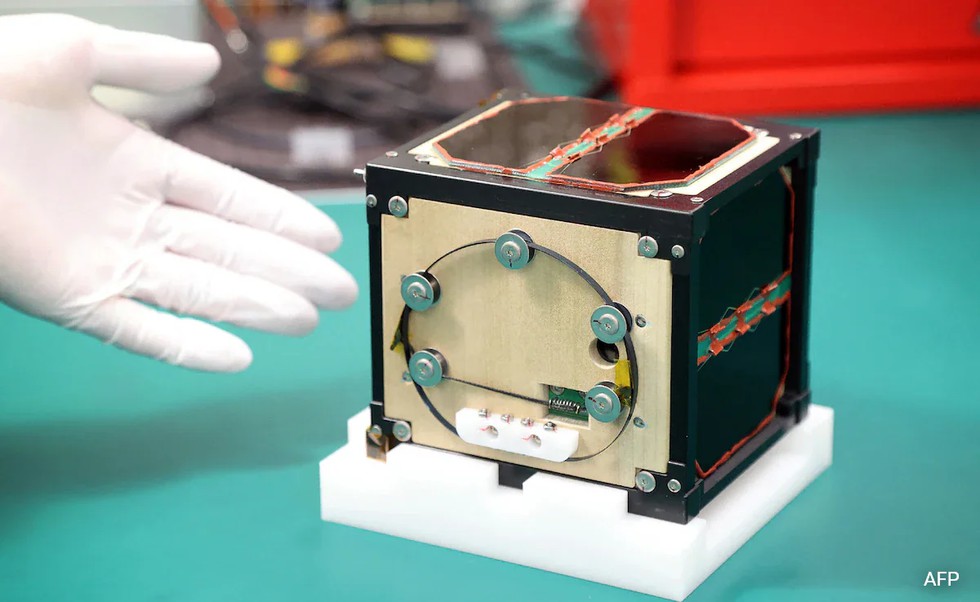
About LignoSat:
- LignoSat”, a fusion of “ligno” (the Latin word for wood) and “satellite”,.
- It is developed by collaborative research and development by a team comprising members from Kyoto University and Sumitomo Forestry Co.
- Objective: Their objective is to leverage the eco-friendliness and cost-effectiveness of wood in space exploration.
- It is constructed from magnolia wood, chosen for its durability and adaptability.
- Why wood is used?
- Wooden satellites are viewed as more environmentally friendly upon reentering the Earth's atmosphere at the conclusion of their mission. Unlike metal satellites, which pose air pollution risks due to the generation of metal particles during reentry, wooden satellites mitigate these concerns.
- It will first be sent to the International Space Station (ISS) aboard a SpaceX rocket from the Kennedy Space Center.
- Once it reaches the ISS, it will be released from the Japanese experiment module to test its durability and strength.
- Researchers will receive data from the satellite to monitor its performance, including signs of strain and its ability to withstand extreme temperature changes.
Prelims Pointers
May 31, 2024

About Recombinant Proteins:
- These are proteins encoded by recombinant DNA that have been cloned in an expression vector that supports the expression of the gene and translation of messenger RNA.
- Modification of the gene by recombinant DNA technology can lead to the expression of a mutant protein.
- It is a manipulated form of native protein, which is generated in various ways in order to increase the production of proteins, modify gene sequences and manufacture useful commercial products.
- It is created by fusing sequences that may not be normally present in an organism.
- Recombinant proteins, such as vaccine antigens, insulin and monoclonal antibodies, are mass-produced by growing modified bacterial, viral or mammalian cells in large bioreactors. The most widely used organism is the yeast Pichia pastoris (now called Komagataella phaffii).
- Application of Recombinant Proteins
- It is used in biomedical research to understand health and disease.
- It is used in Biotherapeutics.
- It is used to produce protein-based polymers for drug delivery, antibodies and enzymes for disease treatment, protein scaffolds for tissue engineering etc.
What is protein?
- It is the workhorse in biological systems facilitating most of biological processes in a cell, including gene expression, cell growth, proliferation, nutrient uptake, intercellular communication and apoptosis.
- The blue print for protein synthesis is stored in DNA, which serves as a template for highly regulated transcriptional processes to produce messenger RNA (mRNA).
Prelims Pointers
May 31, 2024
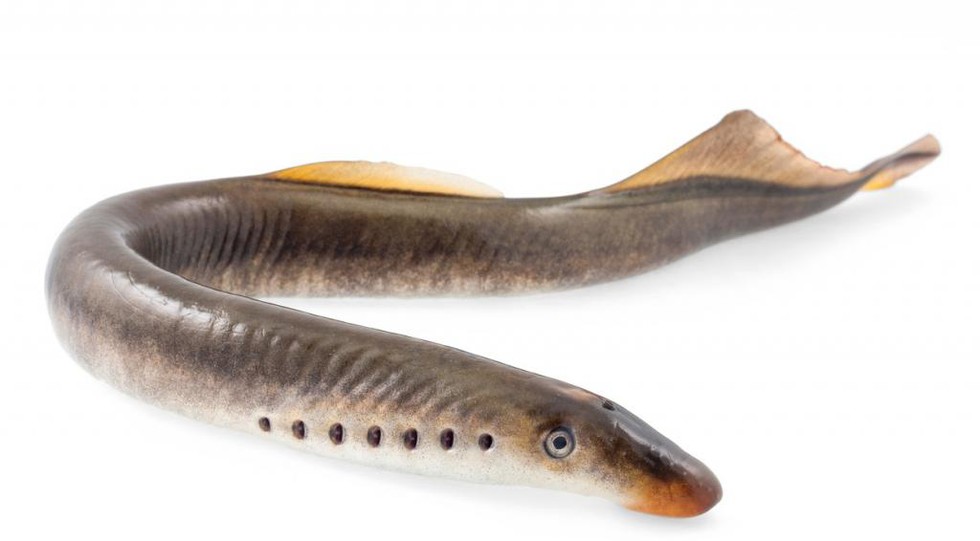
About Diadromous fish:
- These are those fish species which migrate between saltwater and freshwater environments.
- Examples of diadromous fish: the allis shad (Alosa alosa), twait shad (Alosa fal- lax), Mediterranean twaite shad (Alosa agone) and the European eel (Anguilla anguilla) etc.
- In order to better understand these movements, scientists have classified these migrations into several categories.
- Anadromous fish: These are born in freshwater, then migrate to the ocean as juveniles where they grow into adults before migrating back into freshwater to spawn.
- Catadromous fish: These are born in saltwater, then migrate into freshwater as juveniles where they grow into adults before migrating back into the ocean to spawn.
- Amphidromous fish: These are born in freshwater/estuaries, then drift into the ocean as larvae before migrating back into freshwater to grow into adults and spawn.
- Potamodromous fish: These are born in upstream freshwater habitats, then migrate downstream (still in freshwater) as juveniles to grow into adults before migrating back upstream to spawn.
- Threats: Diadromous fish are sensitive to anthropogenic pressures. They are subjected to terrestrial, freshwater, and marine pressures such as agricultural and pollutant runoffs, habitat destruction, barriers to migration, fishing, bycatch and climate change.
Prelims Pointers
May 31, 2024

About KAZA Summit:
- Objectives
- To assess the progress made in establishing and developing the KAZA-TFCA since its inception.
- To review and track the progress of the Memorandum of Understanding done in 2016 and the implementation of the KAZA Treaty done in 2011.
- Seeks to get renewed commitment from the current leaders of the member countries.
- Theme of the summit: “Leveraging KAZA’s natural capital and cultural heritage resources as catalysts for inclusive socio-economic development of the eco-region.”
Key facts about KAZA Region
- The Kavango-Zambezi Trans-Frontier Conservation Area (KAZA-TFCA) is a 520,000-square kilometre wildlife sanctuary straddling five southern African nations that share common borders along the Okavango and Zambezi river basins.
- These nations — Angola, Botswana, Namibia, Zambia and Zimbabwe— together with South Africa, are home to more than two-thirds of the African elephant population.
- It is home to a high concentration of wildlife species, including the largest elephant population.
- About 70 per cent of KAZA land is under conversation made up of 103 wildlife management areas and 85 forest reserves.
- Within it are also three World Heritage sites namely the Victoria Fallson the Zambezi river which makes the border between Zambia and Zimbabwe and the Okavango Delta and the Tsodilo Hills both in Botswana.
- The KAZA states signed a Memorandum of Understanding in 2006 resulting in the KAZA Treaty of 2011 followed by its immediate implementation.
- The KAZA-FTCA area is a partnership centred around “a common vision to conserve biodiversity at scale through promoting integrated transboundary management and to market the landscape biodiversity using nature-based tourism as the engine for rural economic growth and development.”
Prelims Pointers
May 31, 2024
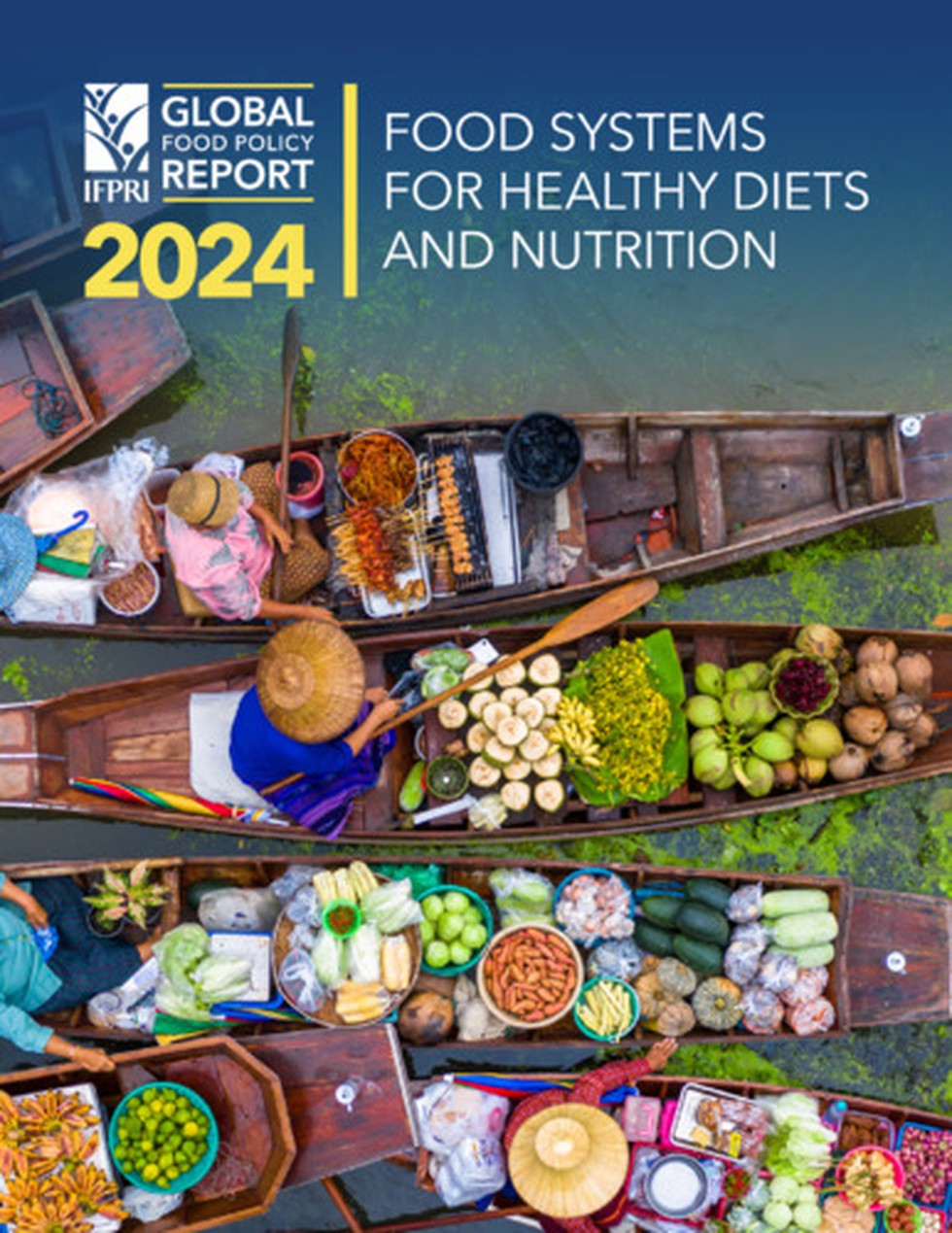
Key highlights of Global food policy report 2024:
- It mentions that at least 38 per cent of the Indian population ate unhealthy foods, while only 28 per cent ate all five recommended food groups, which include at least one starchy staple food, one vegetable, one fruit, one pulse, nut or seed and one animal-source food.
- The consumption of such calorie-dense and nutrient-poor foods was not only high but was also increasing, while the consumption of vegetables and other micronutrient-rich foods was low.
- In India and other South Asian countries, consumption of processed foods is on the rise. After cereals and milk, snacks and prepared foods accounted for the majority of Indian food budgets.
- In India, the proportion of the population suffering from malnutrition increased from 15.4% in 2011 to 16.6% by 2021.
- The prevalence of overweight in adults increased from 12.9% in 2006 to 16.4% in 2016.
- Similarly, the share of packaged (highly processed and calorie-dense) foods in household food budgets nearly doubled during this period, to 12 per cent from 6.5 per cent.
- In the South Asian region, the report highlighted that micronutrient-rich foods were expensive, whereas cereals, fats and oils, sugar, and sugary and salty snacks were relatively inexpensive.
Key facts about the International Food Policy Research Institute (IFPRI)
- It was established in 1975 and provides research-based policy solutions to sustainably reduce poverty and end hunger and malnutrition in developing countries.
- It is a research centre of CGIAR, which is the world’s largest agricultural innovation network.
- Its research focuses on five strategic research areas:
- Fostering Climate-Resilient and Sustainable Food Supply
- Promoting Healthy Diets and Nutrition for Al
- Building Inclusive and Efficient Markets, Trade Systems and Food Industry
- Transforming Agricultural and Rural Economies
- Strengthening Institutions and Governance
- Headquarters:Washington, D.C
May 30, 2024
Prelims Pointers
May 30, 2024

About CERT-In:
- It is the national nodal agency for responding to computer security incidents as and when they occur.
- It is a functional organisation of the Ministry of Electronics and Information Technology, Government of India, with the objective of securing Indian cyberspace.
- CERT-In has been operational since January 2004.
- The constituency of CERT-In is the Indian cyber community and Indian cyberspace.
- The Information Technology (Amendment) Act 2008, designated CERT-In to serve as the national agency to perform the following functions in the area of cybersecurity:
- Collection, analysis and dissemination of information on cyber incidents.
- Forecasts and alerts of cyber security incidents
- Emergency measures for handling cyber security incidents
- Coordination of cyber incident response activities.
- Issue guidelines, advisories, vulnerability notes, and whitepapers relating to information security practices, procedures, prevention, response, and reporting of cyber incidents.
- Such other functions relating to cyber security as may be prescribed.
- To perform these functions, CERT-In is empowered to call for information and issue directions to service providers, intermediaries, data centres, body corporates and any other person.
- CERT-In provides services to organizations in the Government, Public, and Private sectors. In addition, CERT-In provides services to individuals and home users as well.
- Disclosure of information will be followed in accordance with Indian Constitutional laws.
Prelims Pointers
May 30, 2024
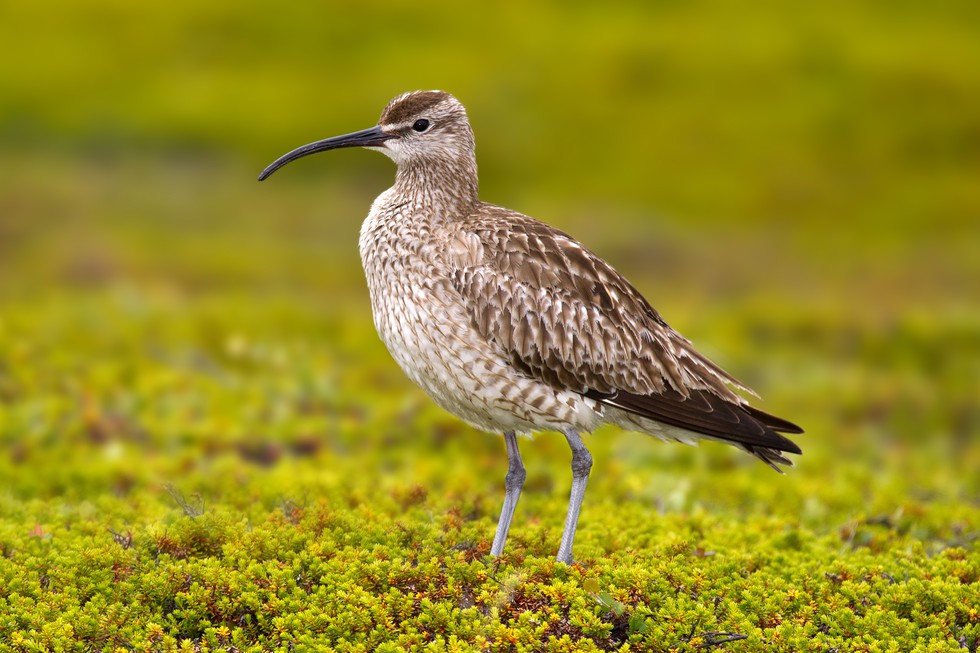
About Eurasian Whimbrel:
- It is a wading bird in the large family Scolopacidae.
- Scientific Name: Numenius phaeopus
- Distribution:
- They have an extensive range that spans across five continents: North America, South America, Asia, Africa, and Europe.
- They breed in the subarctic regions of Siberia and Alaska during the summer months before migrating south to wintering grounds in southern USA, Central America, South America, Africa, and South Asia, including Nepal.
- Habitat: Winters mainly along the coastline, coastal wetlands, mangroves, marshes, and larger rivers.
- Features:
- A fairly large greyish-brown bird with a long, decurved bill with a kink.
- It has a distinct head pattern with dark eye-stripes and crown-sides.
- It is mottled dark brown above, pale below, with much brown streaking on the throat and breast.
- Generally solitary when nesting, the Whimbrel tends to become gregarious outside of the breeding season.
- Whimbrels are known for their high-pitched call consisting of a repetitive series of seven notes.
- Conservation Status:
- IUCN Red List: Least Concern
Prelims Pointers
May 30, 2024
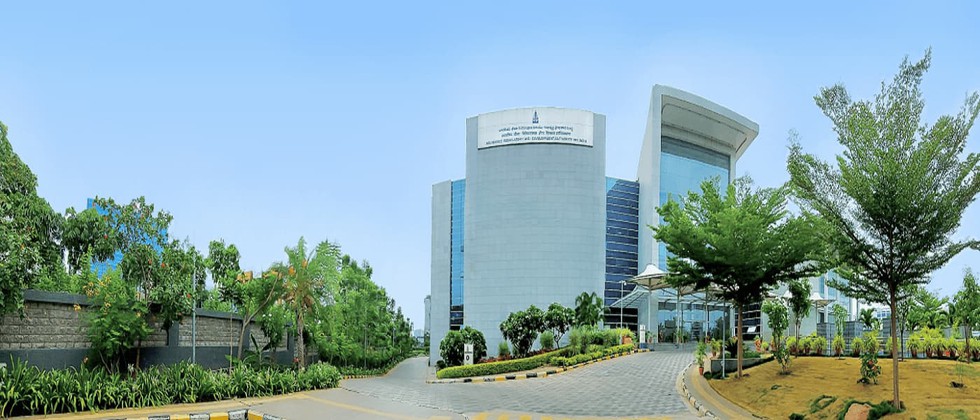
About IRDAI:
- It is a statutory body formed under an Act of Parliament, i.e., the Insurance Regulatory and Development Authority Act, 1999 (IRDAI Act 1999), for the overall supervision and development of the insurance sector in India.
- Objectives:
- To protect the interests and fair treatment of the policyholder.
- To regulate the insurance industry in fairness and ensure the financial soundness of the industry.
- To regularly frame regulations to ensure the industry operates without any ambiguity.
- Head Office: Hyderabad
- It is responsible for registering and/or licensing insurance, reinsurance companies, and intermediariesaccording to the regulations.
- It sets the eligibility criteria, qualifications, and capital requirements for obtaining licenses in the insurance business.
- Entities regulated by IRDAI:
- Life Insurance Companies: Both public and private sector companies
- General Insurance Companies: Both public and private sector Companies. Among them, there are some standalone Health Insurance Companies which offer health insurance policies.
- Re-Insurance Companies
- Agency Channel
- Intermediaries, which include the following:
- Corporate Agents
- Brokers
- Third-party Administrators
- Surveyors and Loss Assessors.
- Composition: It is a 10-member body- a chairman, five full-time members, and four part-time members appointed by the Government of India.
- To protect the interests of policyholders, the IRDAI was granted significant responsibilities, including
- Efficiently conducting the insurance business and protecting the interests of the policyholders in matters concerning assigning of policy, nomination by policyholders, insurable interest, settlement of insurance claims, surrender value of the policy, and other terms and conditions of contracts of insurance.
- Approving product terms and conditions offered by various insurers.
- Regulating the investment of funds by insurance companies and maintaining a margin of solvency.
- Specifying the financial reporting norms of insurance companies.
- Specify code of conduct, qualifications, and training for intermediary or insurance agents.
- Undertaking inspection, calling for information, and investigations, including an audit of insurance companies, intermediaries, and other organizations associated with the insurance business.
- Ensuring insurance coverage is provided in rural areas and also to the vulnerable sections of society.
Prelims Pointers
May 30, 2024

About New System to Identify Scam/Fraud Calls:
- Dedicated Phone Number Series: The DoT has allocated a dedicated 10-digit numbering series starting with 160 for service and transactional calls made by the government, regulators, and financial entities.
- These 10-digit numbers will include additional information to help you recognize the caller.
- The 10-digit number series has been designed by the DoT in such a manner that citizens will get an idea about calling entities as well as the telecom operator and the place from where it has originated.
- This new system aims to give you more information about incoming calls, empowering you to identify potential scams.
- Incoming calls from banks, government departments to display 160 Prefix:
- The 10-digit number will have a 160 prefix and will be issued in 1600ABCXXX format for government, financial institutions, and telecom regulators.
- The AB will show the code of the telecom circle, like 11 for Delhi and 22 for Mumbai.
- While the digit at C place will show the code of the telecom operator.
- The XXX will be digits between 000-999.
- The 10-digit number will have a 160 prefix and will be issued in 1600ABCXXX format for government, financial institutions, and telecom regulators.
- Numbers for financial institutions to be issued in 1601ABCXXX format:
- For financial entities regulated by the RBI, Securities and Exchange Board of India (SEBI), PFRDA (Pension Fund Regulatory and Development Authority), and Insurance Regulatory and Development Authority (IRDA), the 10-digit number will be issued in 1601ABCXXX format.
- Verification and Transparency:
- Telecom service providers (TSPs) are responsible for verifying each entity requesting a 160 series number.
- They will also obtain a commitment that the number will only be used for legitimate service and transactional calls.
Prelims Pointers
May 30, 2024
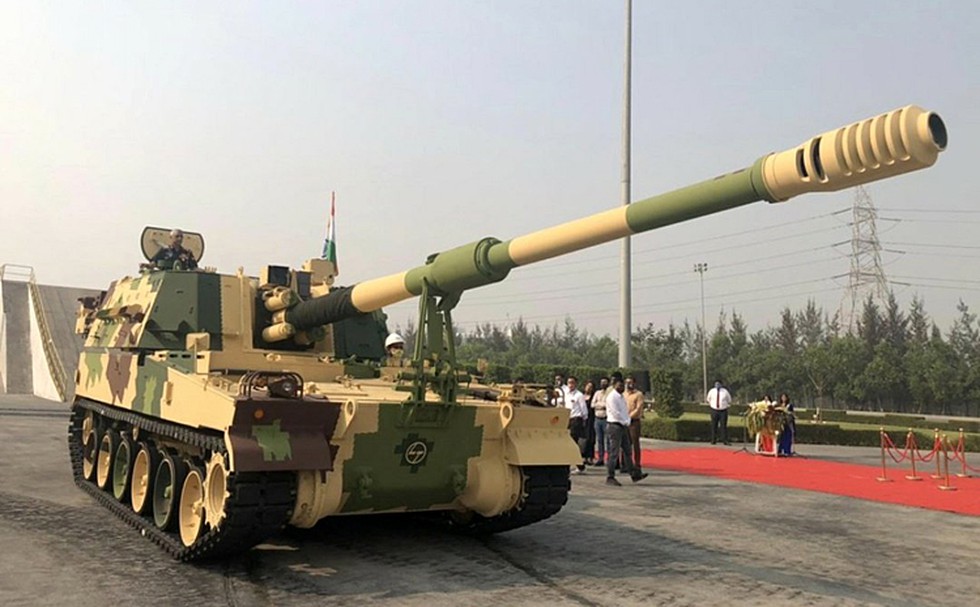
About K-9 Vajra:
- It is a 155 mm, 52-caliber tracked self-propelled artillery system.
- It can fire shells at great elevation angles to hit targets far away.
- It is built by Larsen & Toubrowith technology transferred from South Korean defence major Hanwha Défense based on its K9 Thunder platform.
- It can perform a variety of missions due to its capacity to fire a wide range of artillery ammunition, including high explosive, smoke and illumination shells.
- Features:
- It has all-welded steel armour up to 19mm thick.
- The main weapon is the 155mm / 52 calibre gun.
- The gun weighs 50 tonnes and can fire 47kg bombs.
- It has a burst rate of fire of three rounds per 15 secondsand a maximum rate of fire of six to eight rounds per minute for three minutes.
- It can strike enemy targets at around 50 kilometres.
- It can also turn around at zero radius, basically at the same place where they are standing.
- The K9 uses a digital fire control system, by which it can fire multiple rounds that can impact a given area at the same time.
Prelims Pointers
May 30, 2024
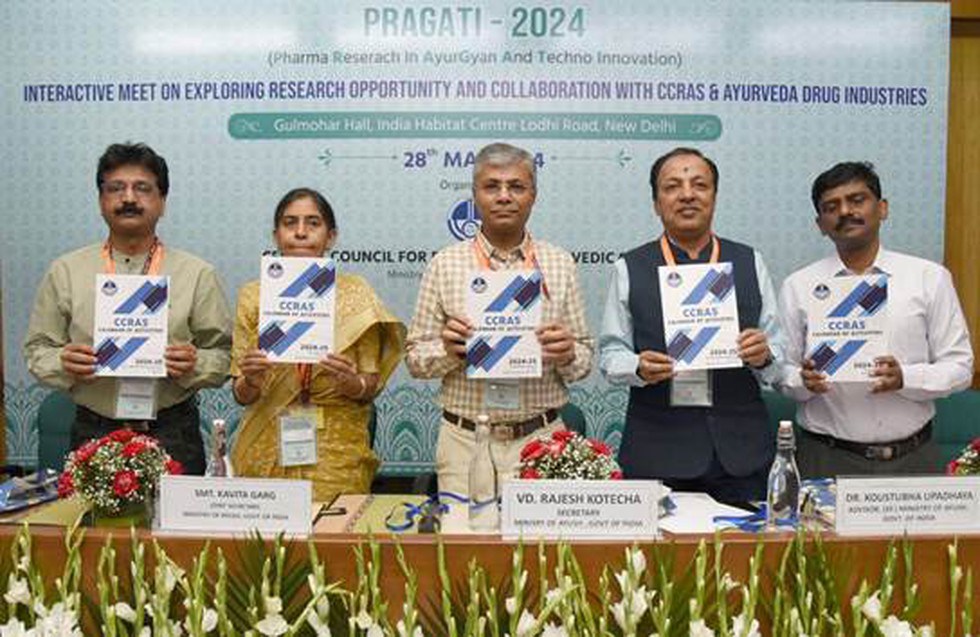
About PRAGATI-2024:
- Pharma Research in AyurGyan And Techno Innovation (PRAGATI) aims to explore research opportunities and foster collaboration between CCRAS and the Ayurveda drug industry.
Key facts about Central Council for Research in Ayurvedic Sciences (CCRAS)
- It is an autonomous body under the Ministry of AYUSH, Govt. of India.
- It is an apex body in India for undertaking, coordinating, formulating, developing and promoting research on scientific lines in Ayurvedic sciences.
- The research activities of the Council include Medicinal Plant Research (Medico-Ethno Botanical Survey, Pharmacognosy and Tissue Culture), Drug Standardization, Pharmacological Research, Clinical Research, Literary Research & Documentation and Tribal Health Care Research Programme.
- It also does formulation, coordination, development and promotion of research on scientific lines in Ayurveda and Sowa-Rigpa system of medicine.
- Headquarter:New Delhi
Prelims Pointers
May 30, 2024
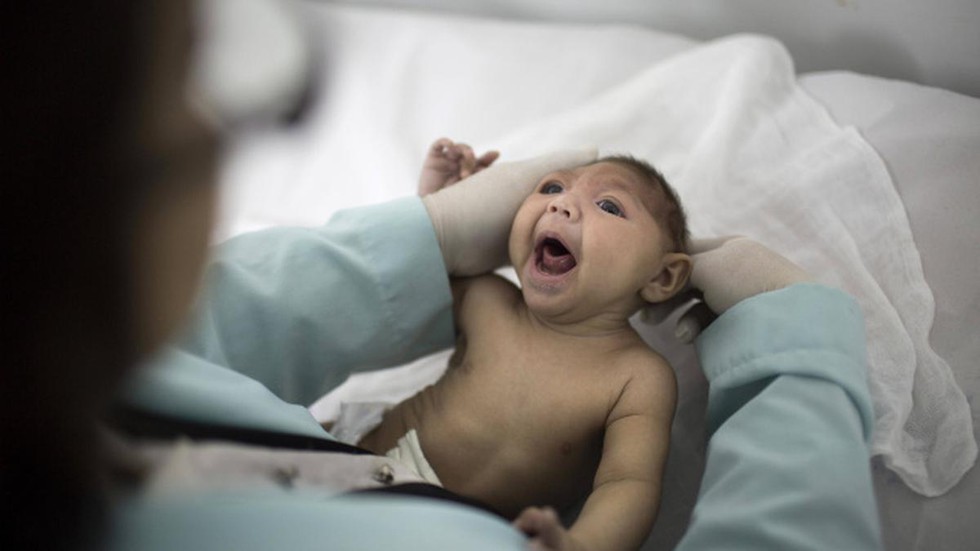
About Microcephaly:
- It is a rare neurological condition in which an infant's head is much smaller than the heads of other children of the same age and sex.
- Sometimes detected at birth, microcephaly often occurs when there is a problem with brain development in the womb or when the brain stops growing after birth.
- It can be caused by a variety of genetic and environmental factors. Children with microcephaly often have developmental issues.
- Most children with microcephaly also have a small brain, poor motor function, poor speech and abnormal facial features, and are intellectually disabled.
- The most common causes include:
- Infections during pregnancy: toxoplasmosis (caused by a parasite found in undercooked meat), Campylobacter pylori, rubella, herpes, syphilis, cytomegalovirus, HIV and Zika;
- Exposure to toxic chemicals: Maternal exposure to heavy metals like arsenic and mercury, alcohol, radiation, and smoking;
- Pre- and perinatal injuries to the developing brain (hypoxia-ischemia, trauma);
- Genetic abnormalities such as Down syndrome; and severe malnutrition during fetal life.
- Symptoms: Many babies born with microcephaly may demonstrate no other symptoms at birth but go on to develop epilepsy, cerebral palsy, learning disabilities, hearing loss and vision problems.
- Treatment: There is no specific treatment for microcephaly.
Prelims Pointers
May 30, 2024
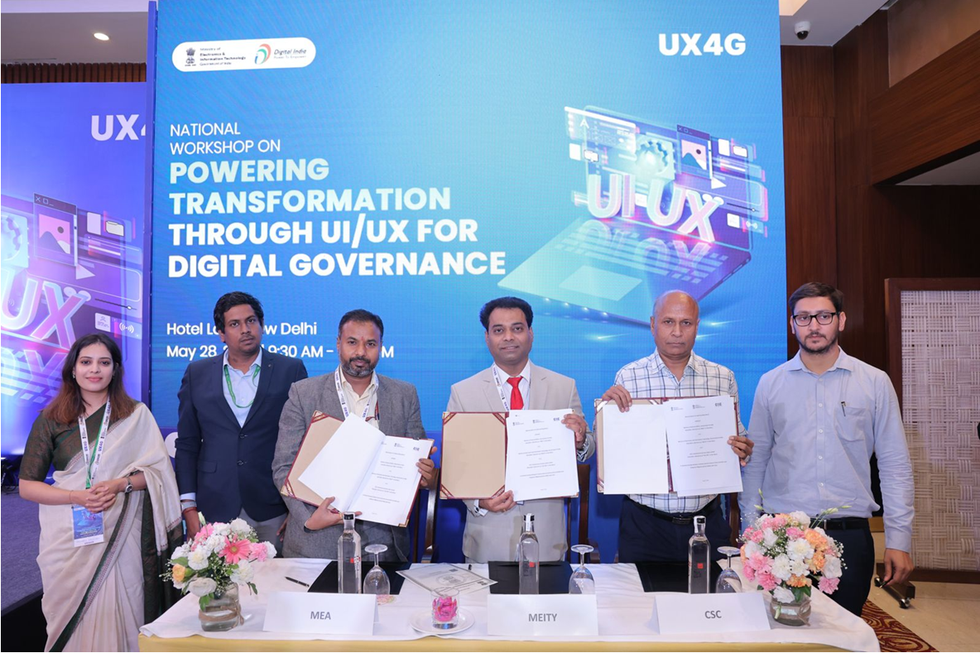
About eMigrate project:
- It is undertaken to assist mainly the blue-collar workers going to Emigration Check Required (ECR) countries.
- The project was conceptualized to address issues faced by the migrant workers by making emigration process online seamless and also to bring foreign employers and registered recruitment agents and insurance companies on one common platform aimed at promoting safe and legal migration.
- Under this MoU, eMigrate Portal of MEA would be integrated with CSC’s portal, to provide following eMigrate services to the citizens through CSCs
- Facilitate registration of applicants on eMigrate portal through CSCs.
- Facilitation of uploading and processing the required documents for the applicants on eMigrate portal through CSCs.
- Facilitate and supporting booking for medical and other services required by migrant workers or applicants registered on eMigrate portal through CSC.
- Creating awareness about eMigrate services amongst citizens across India.
Key facts about Common Service Centre (CSC)
- These are an integral part of the Digital India mission.
- The CSCs are frontend services delivery points for the delivery of digital services to the citizens, especially in the rural and remote areas across the country.
- This helps in contributing towards the fulfilment of the vision of Digital India and the Government’s mandate for a digitally and financially inclusive society.
- Apart from delivering essential government and public utility services, CSCs also deliver a range of social welfare schemes, financial services, educational courses, skill development courses, healthcare, agriculture services, digital literacy, etc.
Prelims Pointers
May 30, 2024
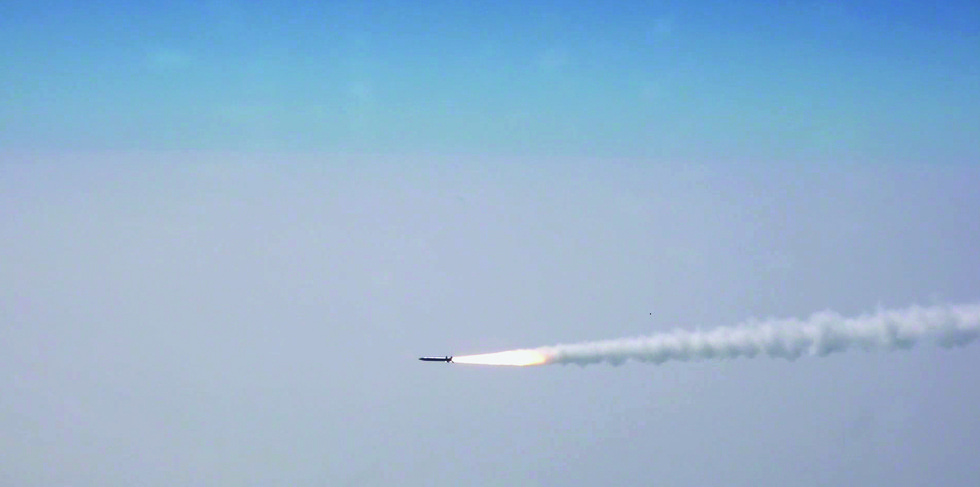
About RudraM-II Missile:
- It is an indigenously-developed solid-propelled air-launched missile system.
- It is meant for Air-to-Surface role to neutralise many types of enemy assets.
- It is designed to have a strike range of almost 350-km, from a Sukhoi-30MKI fighter of the IAF.
- It involves several state-of-the-art indigenous technologies developed by various DRDO laboratories that have been incorporated into the missile system.
RudraM series missiles
- The DRDO is developing these as new-generation anti-radiation missiles (NGARMs) for destroying a variety of enemy surveillance, communication, radars and command and control centers on the ground.
- The 150-km range RudraM-I missile, with INS-GPS navigation with a passive homing head for the final attack, was first tested in Oct 2020.
- The missiles are meant for suppression of enemy air defences (SEAD) from long stand-off ranges, which in turn will enable IAF strike aircraft to carry out bombing missions without hindrance.
What is an anti-radiation missile?
- These are designed to detect, track and neutralise the adversary’s radar, communication assets and other radio frequency sources, which are generally part of their air defence systems.
- Such a missile’s navigation mechanism comprises
- Inertial navigation system: A computerised mechanism that uses changes in the object’s own position — coupled with GPS, which is satellite-based.
- Passive homing head: A system that can detect, classify and engage targets (radio frequency sources in this case) over a wide band of frequencies as programmed.
Prelims Pointers
May 30, 2024
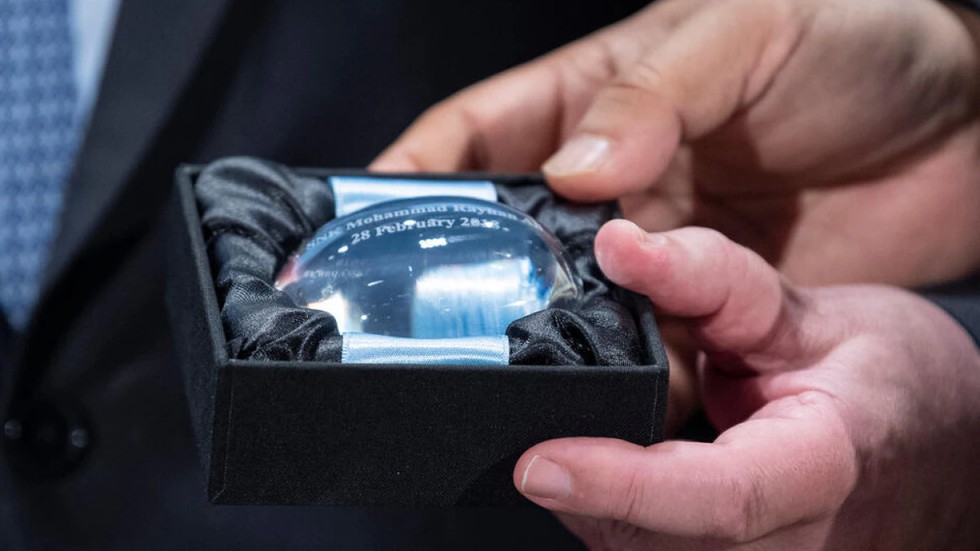
About Dag Hammarskjold medal:
- It was established in 1997 and it is the highest honour awarded to UN peacekeepers.
- It is a posthumous award given to members of peacekeeping operations who lost their lives during service with a peacekeeping operation under the operational control and authority of the United Nations.
- Each year on Peacekeeper's Day, this medal is awarded to any Member State who has lost one or more military or police peacekeepers at a ceremony at United Nation’s headquarters.
- It is named after the second Secretary-General of the United Nations, Dag Hammarskjold.
Other UN Awards
- Captain Mbaye Diagne Medal for Exceptional Courage : It is awarded to those military, police, civilian United Nations personnel and associated personnel who demonstrate exceptional courage, in the face of extreme danger, while fulfilling the mandate of their missions or their functions, in the service of humanity and the United Nations.
- UN Military Gender Advocate of the Year Award: It was started in 2016 to recognises the dedication and effort of an individual peacekeeper in promoting the principles within the United Nations Security Council Resolution 1325.
India and UN Peacekeeping
- India is the second largest contributor of uniformed personnel to UN Peacekeeping.
- It currently deploys more than 6,000 military and police personnel to the UN operations in Abyei, the Central African Republic, Cyprus, the Democratic Republic of the Congo, Lebanon, the Middle East, Somalia, South Sudan and Western Sahara.
May 29, 2024
Prelims Pointers
May 29, 2024

About Magellan Mission:
- It was a deep space mission launched by NASA on May 4, 1989, to explore the planet Venus.
- It was launched from Cape Canaveral aboard the space shuttle Atlantis. It was the first interplanetary mission launched from the Space Shuttle and the first spacecraft to use the Inertial Upper Stage booster.
- It was named after the Portuguese explorer Ferdinand Magellan, who was the first to circumnavigate the earth.
- The primary goal of the Magellan mission was to map the surface of Venus using radar imaging, as the thick atmosphere of the planet made visual observation difficult.
- The Magellan spacecraft, which arrived at Venus in 1990, made the first global map of the surface of Venus as well as global maps of the planet's gravity field.
- The mission produced surprising findings about Venus, including a relatively young planetary surface possibly formed by lava flows from planet-wide volcanic eruptions.
- In October 1994, the Magellan spacecraft intentionally plunged to the surface of Venus to gather data on the planet's atmosphere before it ceased operations.
- It marked the first time an operating planetary spacecraft had been intentionally crashed.
Prelims Pointers
May 29, 2024
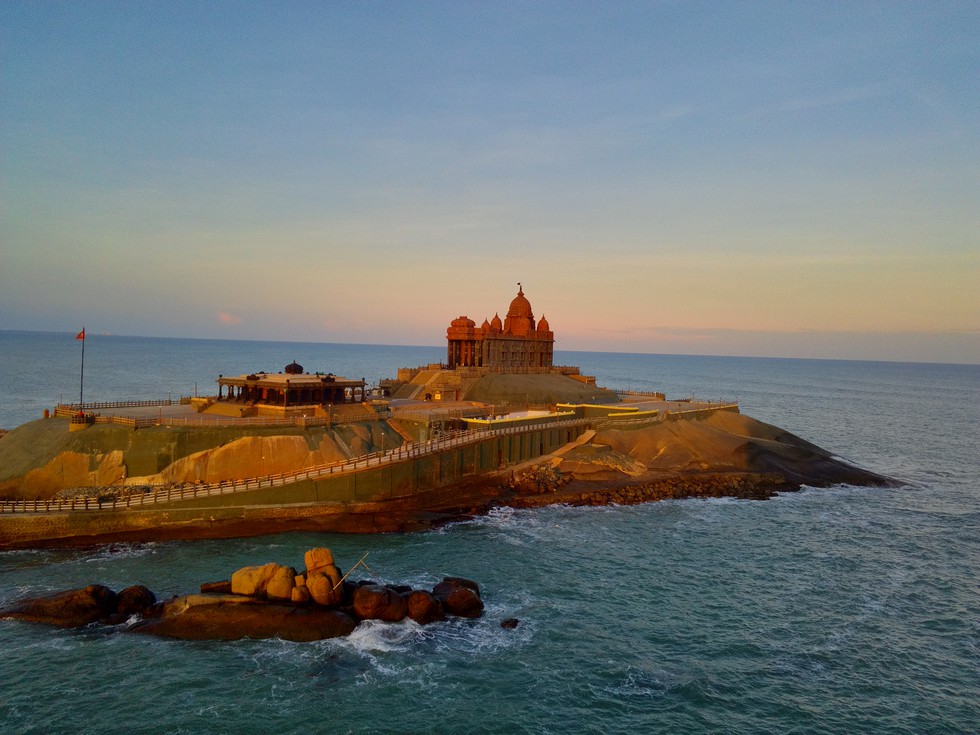
About Vivekananda Rock Memorial:
- It is located on a small island off Kanyakumari, Tamil Nadu.
- The memorial stands on one of the two rocks located about 500 meters off the mainland of Vavathurai.
- The rock is surrounded by the Laccadive Sea, where the Bay of Bengal, the Indian Ocean, and the Arabian Sea form a confluence.
- It was built in 1970 in honour of Swami Vivekananda, who is said to have attained enlightenment on the rock.
- It comprises of the 'Shripada Mandapam' and the 'Vivekananda Mandapam'.
- There is also a life-sized bronze statue of Swami Vivekananda on the premises.
- It is also a memorial for which all State Governments and the Central Government contributed.
Who was Swami Vivekananda?
- Swami Vivekananda (1863–1902), born Narendranath Datta, was a Hindu monkand one of the most celebrated spiritual leaders of India.
- He was the foremost disciple of Sri Ramakrishna Paramhamsa and a world spokesperson for Vedanta.
- He was hailed as a Dhyana Sidha, a meditation expert, by his guru, Ramakrishna Paramhamsa.
- He attempted to combine Indian spirituality with Western material progress, maintaining that the two supplemented and complemented one another.
- He believed that the path to self-purification is through helping others. He encouraged people to engage in selfless service and to work towards the betterment of society.
- Through his teachings on the four yogas, the harmony of religions, the divinity of the soul, and serving humanity as God, Vivekananda gave spiritual aspirants paths to that realization.
- Vivekananda represented Hinduism at the 1893 World’s Parliament of Religionsconvened during the World’s Columbian Exposition in Chicago.
- After his first visit to the West, Swami Vivekananda went back to India and founded the Ramakrishna Order at Belur outside of Kolkata in 1897.
Prelims Pointers
May 29, 2024
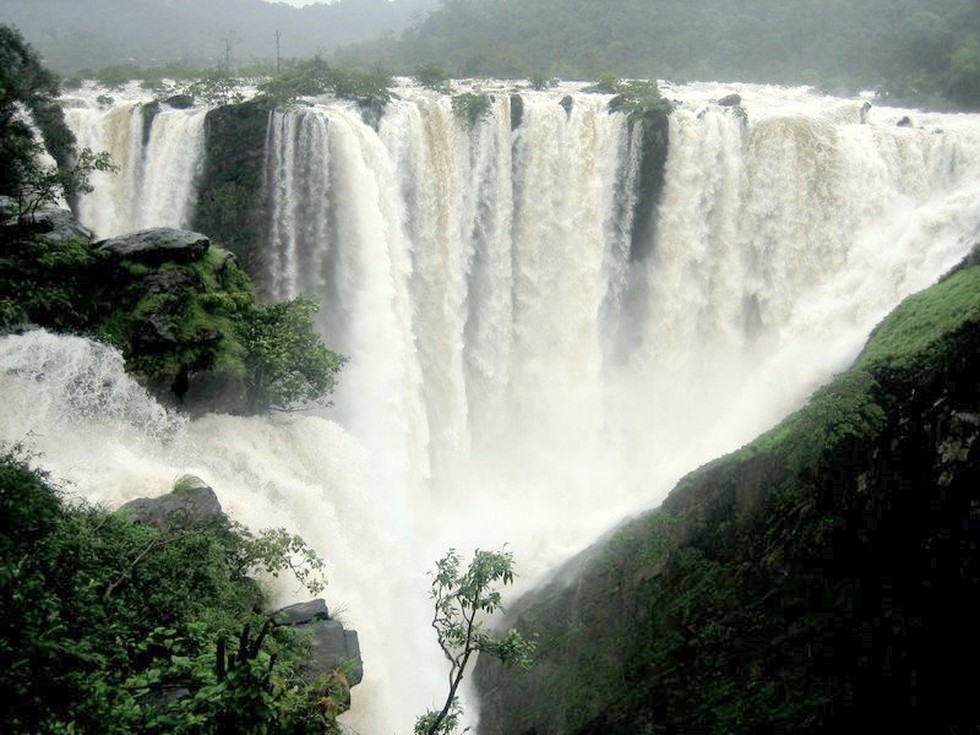
About Sharavathi River:
- It is a river in westernKarnataka state.
- It is one of the few westward-flowing rivers in India and a major part of the river basin lies in the Western Ghats.
- Course:
- Rising in the Western Ghats, it flows in a northwesterly direction to the Arabian Seaat Honavar in Uttara Kannada District.
- The length of the river is 128 km, and the river basin covers 2,985 sq km.
- On its way, the Sharavathi forms the Jog Falls, one of the highest waterfalls in India, where the river falls from a height of 253 m.
- Major Tributaries: Nandihole, Haridravathi, Mavinahole, Hilkunji, Yennehole, Hurlihole, and Nagodihole.
- It is a vital source of hydroelectric power in Karnataka. Currently, the river generates a significant portion (40 percent or 1,469.2 megawatts) of the state’s hydropower using seven existing dams and five tunnels.
Prelims Pointers
May 29, 2024
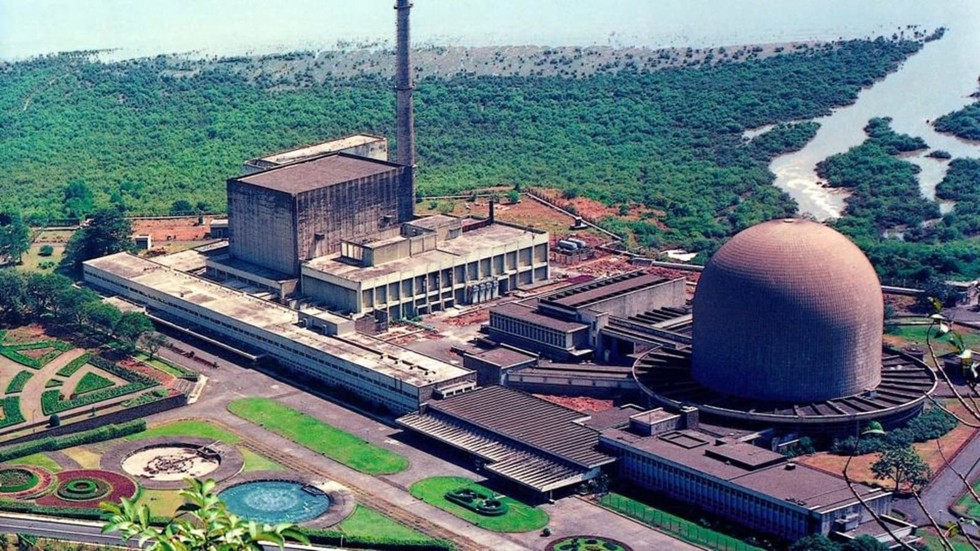
About Bhabha Atomic Research Centre (BARC):
- It is India’s premier nuclear research facility.
- It is headquartered in Trombay, Mumbai, Maharashtra.
- It operates under the Department of Atomic Energy, which is directly overseen by the Prime Minister of India.
- It is a multi-disciplinary research centre with extensive infrastructure for advanced research and development covering the entire spectrum nuclear science and engineering and related areas.
- BARC is the research backbone of the Nuclear Power Corporation of India (NPCIL), which currently operates all nuclear power reactors in India.
- History:
- Homi Jehangir Bhabha conceived the nuclear program in India.
- Bhabha established the Tata Institute of Fundamental Research (TIFR) to carry out nuclear science research in 1945.
- To intensify the effort to exploit nuclear energy for the benefit of the nation, Dr. Bhabha established the Atomic Energy Establishment, Trombay (AEET), in January 1954 for a multidisciplinary research program essential for the ambitious nuclear program of India.
- After the death of Bhabha in 1966, AEET was renamed Bhabha Atomic Research Centre (BARC).
- Functions:
- It is engaged in research with the objective of generating knowledge and techniques for nuclear power production, the advancement of nuclear science, the use of radioisotopes in industry, health, and agriculture, and research in frontier areas of science and technology.
- It is responsible for the design and development of nuclear reactors, fuel cycle technologies, radiation protection, and safety systems.
- BARC also plays an important role in nuclear education and training. It offers various training programs for scientists, engineers and technicians in the areas of nuclear science and technology.
Prelims Pointers
May 29, 2024
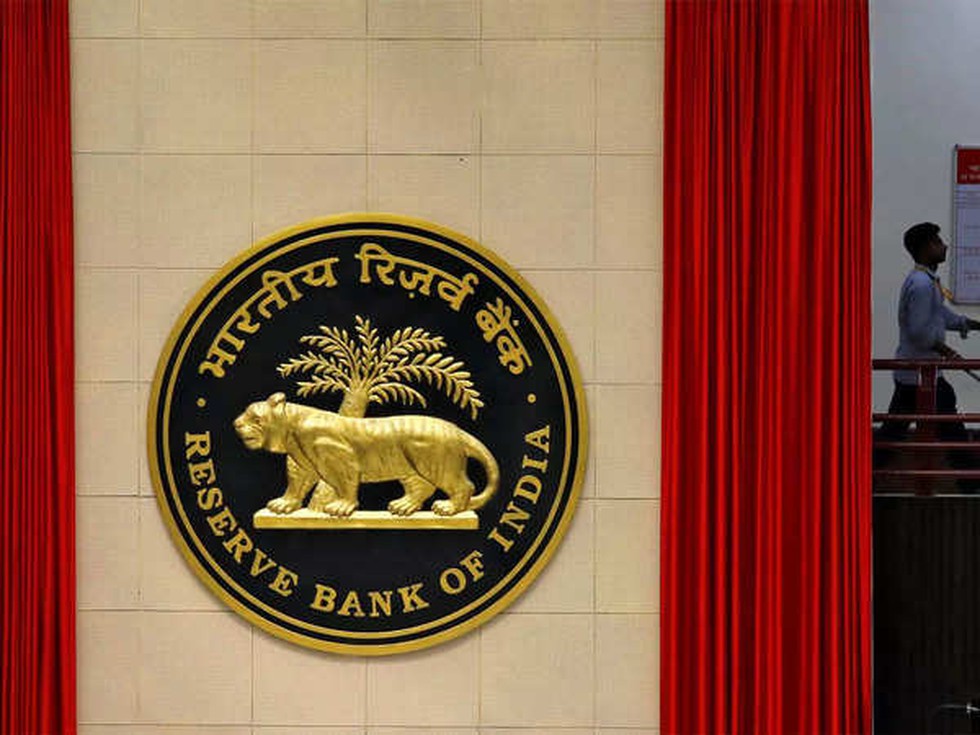
About Pravaah Portal:
- Pravaah (Platform for Regulatory Application, Validation, and AutHorisation) is a secure and centralised web-based portal for any individual or entity to seek authorisation, license, or regulatory approval on any reference
made by it to the RBI. - The following are some of the key features available in the portal:
- Submit the application online on the portal.
- Track and monitor the status of the application/reference.
- Respond to any clarification/query sought by the RBI in connection with the application/reference; and
- Receive a decision from the RBI in a time-bound manner
- This portal will also enhance the efficiency of various processes related to the granting of regulatory approvals and clearances by the RBI.
- At present, 60 application forms covering different regulatory and supervisory departments of RBI have been made available on the portal.
- This also includes a general-purpose form for applicants to submit their requests, which are not included in any other application form.
About Retail Direct Mobile App:
- The retail direct portal was launched in November 2021 to facilitate retail investors to open their Retail Direct Gilt accounts with the RBI (https://rbiretaildirect.org.in) under the Retail Direct Scheme.
- The scheme allows retail investors to buy G-Secs in the primary auctions as well as buy and sell G-Secs in the secondary market.
- With the launch of the retail direct mobile app, retail investors can now transact in G-Secs using the mobile app on their smartphones.
About FinTech Repository:
- It aims to capture essential information about FinTech entities, their activities, technology uses, etc. FinTechs, both regulated and unregulated.
- It will contain information on rich repository of data on Indian FinTech firms for a better understanding of the sector that would be useful for both policymakers and participating industry members.
- Simultaneously, a related repository for only RBI-regulated entities (banks and NBFCs) on their adoption of emerging technologies (like AI, ML, Cloud Computing, DLT, Quantum, etc.), called EmTech Repository is also being launched.
- The FinTech and EmTech Repositories are secure web-based applications and are managed by the Reserve Bank Innovation Hub (RBIH), a wholly owned subsidiary of RBI.
Prelims Pointers
May 29, 2024
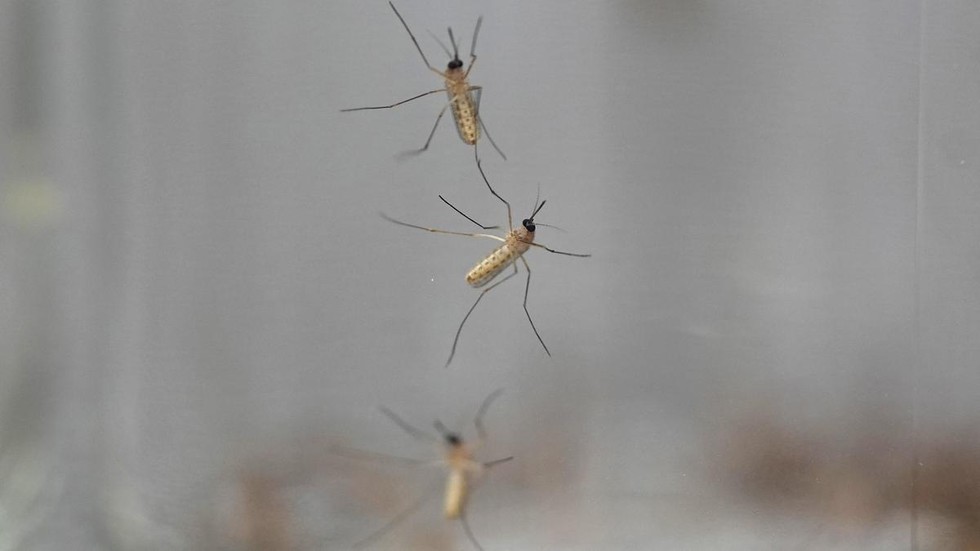
About Anopheles stephensi:
- It is a malaria vector native to South Asia.
- It transmits both Plasmodium falciparum and P. vivax. It rapidly adapts to changes in the environment and is found in both rural and urban areas.
- This is different from African malaria vectors, which are typically found in rural areas.
- This species can thrive in urban areas and likes being near humans.
- They lay their eggs in any available water source – such as water containers, abandoned tyres and flowerpots – and their eggs can survive being dry for a long period of time.
- In addition, An. stephensi feeds on its vertebrate host both indoors and outdoors. This reduces the impact of commonly used vector control methods such as insecticide-treated nets and indoor residual spraying.
- Concerns:
- Anopheles stephensi as well as of Aedes mosquitoes, which carry many dreaded diseases including dengue, yellow fever, chikungunya and Zika.
- The invasion of this urban mosquito into Africa threatens the malaria elimination aspirations of the continent, particularly as 42.5% of Africa’s population now live in urban area.
Prelims Pointers
May 29, 2024
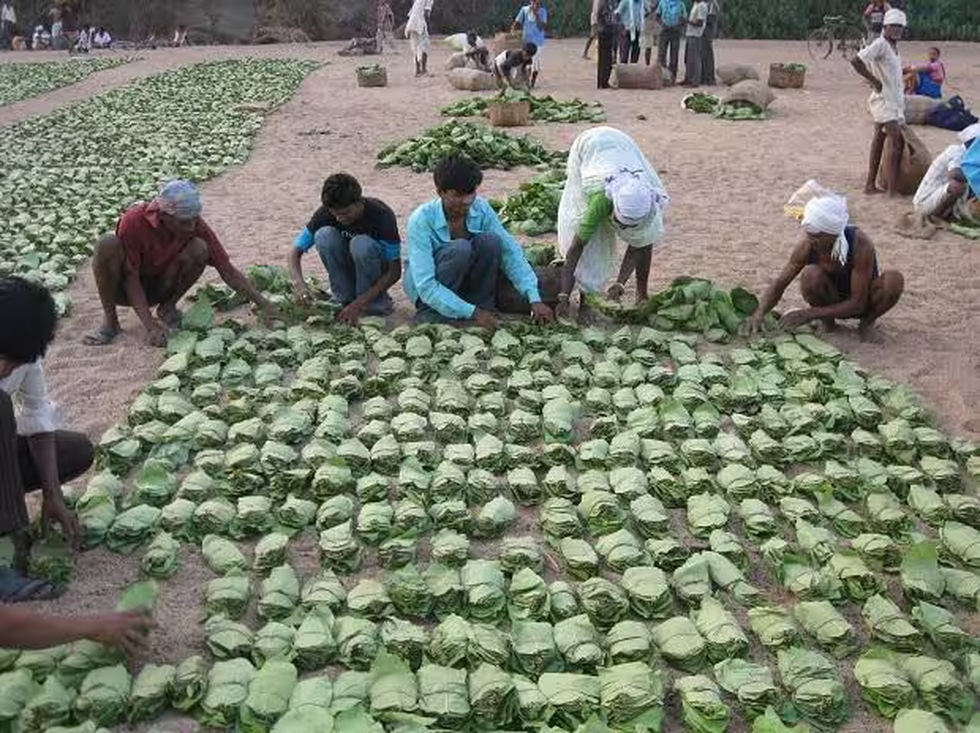
About Minor Forest Produce:
- The Scheduled Tribe and Other Traditional Forest Dwellers (Recognition of Forest Rights) Act, 2006, or Forest Rights Act (FRA), defines ‘minor forest produce’ as any non-timber forest product of plant origin.
- This includes various items such as bamboo, brush wood, stumps, cane, tussar, cocoons, honey, wax, lac, kendu leaves, medicinal plants, herbs, roots, tubers and similar items.
- In simple terms, it encompasses all other forest products, excluding timber.
What is Kendu Leaf?
- It is called the green gold of Odisha. It is a nationalized product like Bamboo and Sal seed.
- It is one of the most important non-wood forest products of Odisha.
- It is also referred to as tendu leaf in some parts of the country and is used to roll tobacco into bidis (local cigarettes).
- Production:
- The states producing kendu leaves in India comprise mainly Madhya Pradesh, Chhatisgarh, Odisha, Andhra Pradesh, Jharkhand, Gujarat, and Maharastra.
- Odisha is the third-largest producerof kendu leaf after Madhya Pradesh and Chhattisgarh.
Prelims Pointers
May 29, 2024
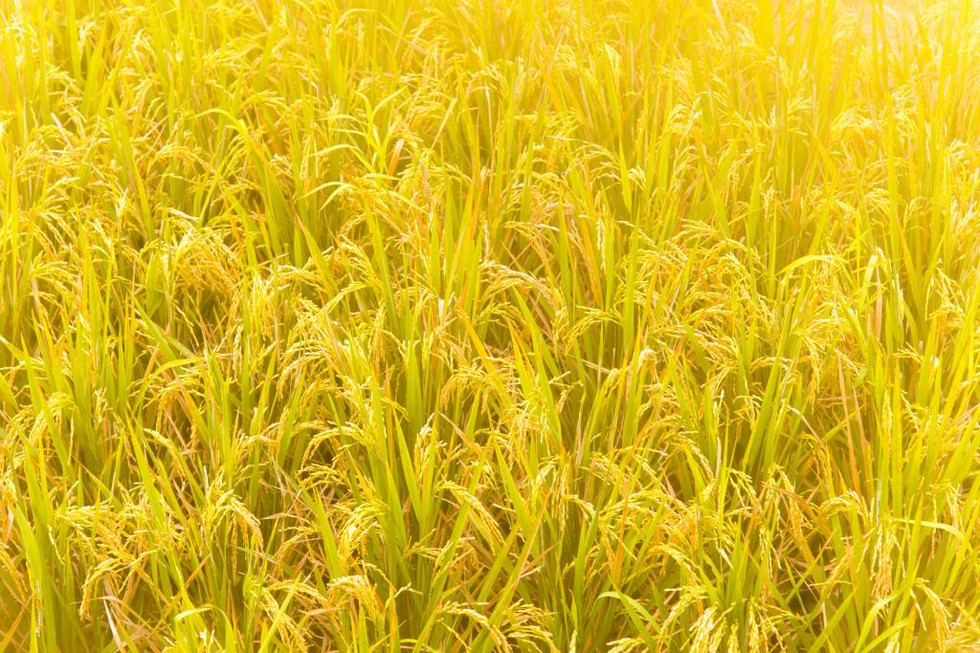
About Golden Rice:
- It is a new type of rice that contains beta carotene (provitamin A, a plant pigment that the body converts into vitamin A as needed). This compound is what gives this grain its yellow-orange or golden color.
- It is developed through genetic engineering.
- While ordinary rice does produce beta carotene, it is not found in the grain. Thus, scientists used genetic engineering to add the compound to the grain - a minor tweak that improved the grain’s nutritive value.
- The beta carotene in Golden Rice, which was made possible by the addition of two new enzymes, is identical to the beta-carotene found in green leafy and yellow-colored vegetables, orange-colored fruit, and even in many vitamin supplements and food ingredients.
- Like ordinary rice, Golden Rice does not require any special cultivation practices, and generally has the same yield and agronomic performance.
- This rice is expected to cost and taste the same as regular rice, its beta carotene content makes it a valuable asset in the battle against Vitamin A deficiency (VAD).
- Vitamin A is an essential micronutrient for growth, development, and keeping the body’s visual and immune systems healthy.
- VAD weakens the body’s resistance to diseases and infections, causes blindness, and may even result in death if left untreated.
Prelims Pointers
May 29, 2024

About Evacuation Slides:
- It is an inflatable slide which allows passengers to safely exit the flight during an emergency, especially when the flight door is high above the ground.
- There are four types of evacuation slides:
- Inflatable slide: The inflatable slide helps passengers descend to the ground from an aircraft exit door. In case they cannot use the doors, they can try to reach either of the aircraft wings. From there, they can use the slide to reach the ground.
- Inflatable slide/raft: It does the same job as the slide, but it can also be used as a life raft in case the aircraft has to land on water.
- Inflatable exit ramp: The inflatable exit ramp is installed to help passengers move from certain overwing exits (or aircraft emergency exits) to the wings if that path looks better for reaching the ground.
- Inflatable exit ramp/slide: The inflatable exit ramp/slide is there to assist in descending from an overwing exit or aeroplane wing to the ground. It is a combination ramp and wing-to-ground device.
- These are typically made from carbon fibres and a nylon material coated with urethane for fire resistance. Strong fibres are used to build these slides so that passengers are not able to tear them while descending.
- Slides are generally packed and installed within a cabin door or into an external fuselage compartment.
- They are inflated with the help of high-pressure gas carbon dioxide or nitrogen gas containers and ambient air through suction machines.
- What are the protocols for deploying evacuation slides?
- An evacuation slide must be deployed when the distance between the ground and the flight exit door is six feet or more.
- The European Union Aviation Safety Agency’s guidelines say that a slide should be automatically deployed, once the door is opened. The slide must be inflated between six and 10 seconds, depending on its location.
- It should be properly deployable in all weather conditions — as cold as -40 degree Celsius and as hot as 71 degree Celsius.
- The slide should be able to sustain a rainfall of up to one inch an hour and winds up to the speed of 46 km/hr which would be coming 45 degree angles around the aeroplane.
Prelims Pointers
May 29, 2024

About Himalayan serow:
- It resembles as a cross between a goat, a donkey, a cow, and a pig.
- Types
- There are several species of serows, and all of them are found in Asia.
- The Himalayan serow, or Capricornis sumatraensis thar, is restricted to the Himalayan region. Taxonomically, it is a subspecies of the mainland serow (Capricornis sumatraensis).
- Diet: These are herbivores species.
- Distribution: These are typically found at altitudes between 2,000 metres and 4,000 metres (6,500 to 13,000 feet). They are known to be found in eastern, central, and western Himalayas, but not in the Trans Himalayan region.
- Conservation Status:
- IUCN Red List: Vulnerable
- CITES: Appendix I
- The Wildlife Protection Act, 1972: Schedule I
Key facts about Nameri Tiger Reserve
- It is situated in the northern part of the Sonitpur district of Assam, along the foothills of Arunachal Pradesh.
- The Nameri National Park constitutes the core of NTR, which is bound by rivers, viz. Jia-Bhoreli in the west and Bor-Dikorai in the east.
- The Pakke Tiger Reserve of Arunachal Pradesh is on the North and the habitat is contiguous.
- Flora: It is made up of tropical evergreen, semi-evergreen, moist deciduous forests with cane brakes and narrow strips of open grassland along rivers.
- Fauna:
- The habitat is biologically rich and is famous for the white winged wood duck.
- Even Leopard cat, common otter, Black giant squirrel, Indian mongoose, Large clawed shrew, Indian flying fox, slow loris, Assameese macaque, Rhesus macaque are also found here.
May 28, 2024
Prelims Pointers
May 28, 2024

About Article 329(b):
- Enshrined in Part XV of the Constitution, articles 324-329 specifically discuss elections.
- While Article 324 gives the poll panel powers to direct and control elections, Article 329, which has two clauses, concerns itself with the role of the judiciary in electoral matters.
- Article 329(a) says the “judiciary is not allowed to challenge the constitutionality of laws relating to the boundaries of electoral districts or the allocation of seats.
- Article 329(b) as amended by the Constitution (19th Amendment) Act, 1966, provides that notwithstanding anything in the Constitution, no election to either House of Parliament or the Legislature of a State shall be called into question except by an election petition presented to such authority and in such manner as may be provided for by or under any law made by the appropriate Legislature.
- It stipulates that election-related inquiries are exclusively addressed through election petitions presented to the authority designated by that law.
- The Representation of the People Act, 1951, furthers this clause as it empowers the high courts to hear and decide election petitions.
- A decision in such petitions can be challenged in the Supreme Court (SC).
- SC Rulings:
- In the 1952 Ponnuswamy judgment (Ponnuswami v. Returning Officer Namakkal), the SC held that the word “election” in Article 329(b) connotes the entire electoral process commencing with the issue of the notification calling the election and culminating in the declaration of result and that the electoral process once started could not be interfered with at any intermediary stage by courts.
- The SC in K. Venkatachalam vs. A. Swamickan (1999) determined that Article 329(b) is inapplicable if the matter pertains to Articles 191 and 193, which deal with disqualifications and penalties related to parliamentary and legislative assembly membership, respectively.
Prelims Pointers
May 28, 2024
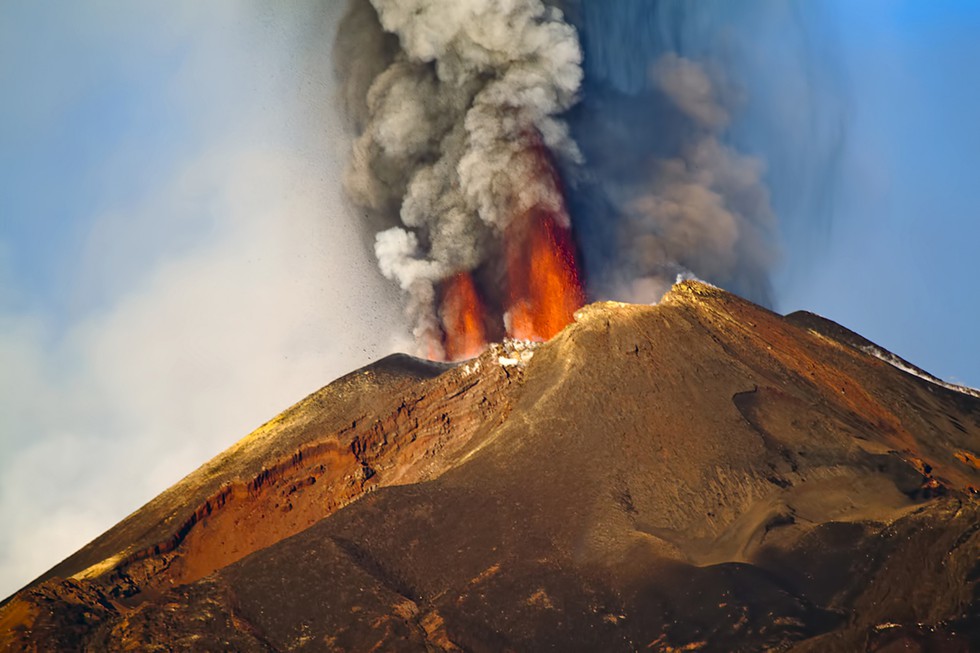
About Campi Flegrei:
- Campi Flegrei (known as Phlegrean Fields in English) is an active volcanic area located in the vicinity of Naples, Italy.
- Unlike the nearby Mount Vesuvius, Campi Flegrei is not characterised by a single volcano.
- It is more of a volcanic system, with several centres situated within a caldera (the depression created when emptying magma chambers causes the roof of a volcano to collapse).
- The Campi Flegrei caldera has a diameter of about 12-15 km (7.5-9.3 miles).
- It was formed 39,000 years ago after an eruption emptied it of magma. According to a new hypothesis, this eruption could have been the beginning of the end of the Neanderthal.
- One-third of it lies under the Tyrrhenian Sea, between the Italian mainland and the country’s island of Sardinia.
- It is the largest active caldera in Europe. It is much larger than the cone-shaped Vesuvius, which destroyed the ancient Roman city of Pompeii in AD79 and is much more active.
- Campi Flegrei has been in a restless state since 1950. It is a result of a phenomenon known as bradyseism, which scientists understand to be the gradual movement of part of Earth’s surface caused by the filling or emptying of an underground magma chamber or hydrothermal activity.
- It last erupted in 1538, after an interval of about 3000 years. This eruption, although minor in comparison, formed Monte Nuovo, a new mountain.
- Scientists consider Campi Flegrei to be a supervolcano whose eruptions can have worldwide effects.
Prelims Pointers
May 28, 2024
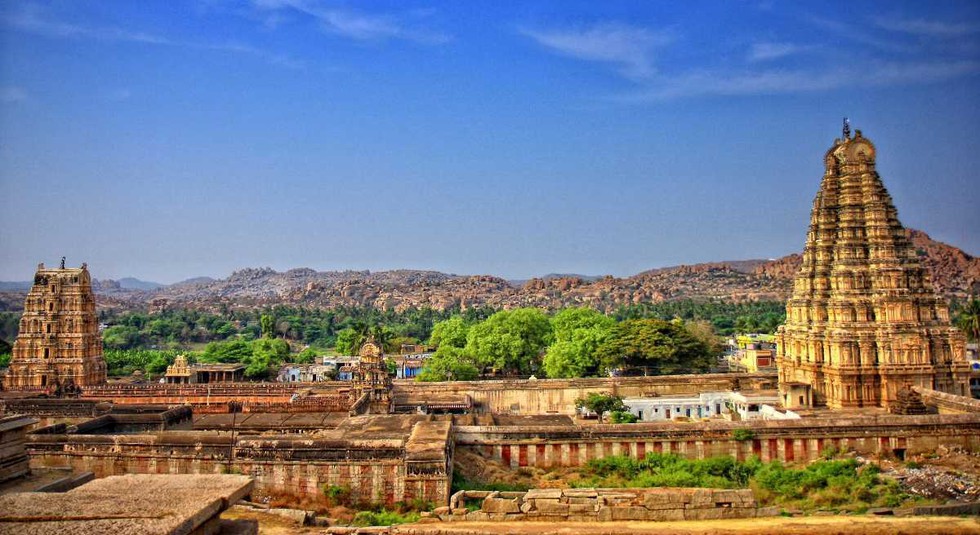
About Virupaksha Temple:
- It is a Hindu temple dedicated to Lord Virupaksha, a form of Lord Shiva.
- Location:
- It is located in Hampi, in the Vijayanagara district of Karnataka.
- It is part of the Group of Monuments at Hampi, designated as a UNESCO World Heritage Site.
- It is situated on the southern bank of the Tungabhadra River.
- According to history, this temple has been functioning uninterruptedly ever since its inception in the 7th century AD and is one of India's oldest functioning temples.
- Originally a small, humble shrine, it was expanded to its present magnificence during the reign of the Vijayanagara kings, though additions to its temple were also made by the Chalukyan and Hoysala eras.
- Architecture:
- It is built in South Indian architectural style.
- Hampi's only continuously functioning temple, it includes a sanctum sanctorum, pillared halls–the most elaborate one consisting of 100 pillars–antechambers, grand gopurams, and a number of smaller shrines, along with a temple kitchen and administrative offices.
- It has three gopurams; the eastern gopuram is the largest (nine storeys and 50 meters tall); the other two are the smaller gopurams on the inner east and inner northern sides of the temple complex.
- Beautiful sculptures of many Hindu Gods adorn the outer faces of the gopurams.
- Apart from these, builders utilized physics principles such as Rectilinear Light Theory and the pinhole camera effect, along with mathematical concepts like fractals, geometry, complex mathematics and the Fibonacci number sequence, to construct the temple.
- The most interesting part of the structure is the inverted pinhole image of its tower present on the inner wall.
Prelims Pointers
May 28, 2024
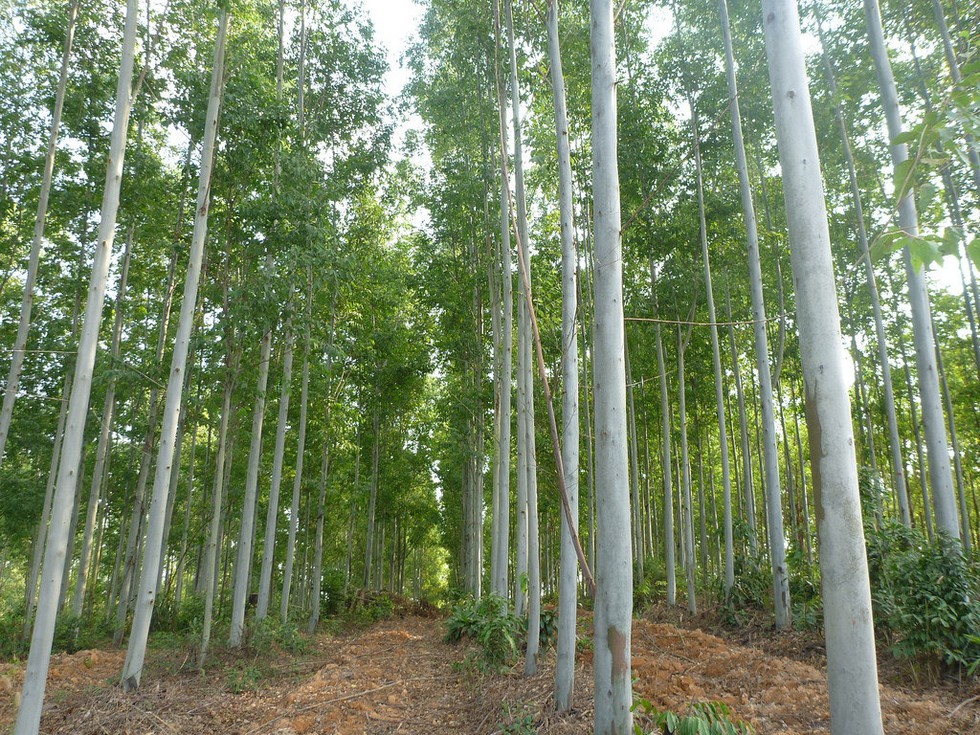
About Eucalyptus:
- It is a large genus of more than 660 species of shrubs and tall trees of the myrtle family (Myrtaceae).
- Some of the tallest trees in the world are eucalypti.
- It is native to Australia, Tasmania, and nearby islands.
- In Australia, the eucalypti are commonly known as gum trees or stringybark trees.
- Many species are cultivated widely in many areas of the world as shade trees or in forestry plantations.
- Features:
- It has a gum-infused bark, long stems and circular leaves that are hard to digest if eaten whole.
- Small flowers grow on eucalyptus trees. They come in many colors, including white, yellow and shades of red.
- Eucalypti also have small woody capsules. Inside the capsules are seeds.
- Uses:
-
- It is widely used for its medicinal properties.
- Some eucalyptus leaves contain an oil that has a strong smell.
- It is useful to treat a variety of common diseases and also works amazingly when applied topically in diluted form.
- The main compound of eucalyptus oil is cineole, also known as eucalyptol. The oil also contains flavonoids and tannins, which acts as anti-inflammatory and antioxidants.
- It is known for its ability to relieve congestion and ease breathing in colds.
- It is also used as a pain reliever for sore and overextended muscles.
- It is an excellent topical remedy for aching joints and rheumatism. It helps improve blood circulation.
- Eucalyptus wood is tough and durable. It is used to build things such as furniture and fences.
- It is widely used for its medicinal properties.
- Eucalyptus Plantations in India:
- Eucalyptus tereticornis and Eucalyptus hybrid are the two most widely planted eucalypts in India.
- It is widely grown in Tamil Nadu, Andhra Pradesh, Gujrat, Haryana, Mysore, Kerala and in the Nilgiri Hill.
- It grows well in deep, fertile, well-drained loamy soil with adequate moisture.
Prelims Pointers
May 28, 2024

About Strain Rate:
- Strain is how much a material deforms when stress is applied. It is a measure of the change in shape or size of an object relative to its original shape or size.
- It has units of meters divided by meters, so it ends up without physical units.
- Strain rate is the rate of deformation caused by strain in a material within a corresponding time.
- It is a measure of how quickly a material is deformed over time.
- It involves both the rate wherein a certain material expands and shears.
- Strain Rate = Change in Strain / Change in Time
- The unit of strain rate is per second.
- Importance:
-
- It is an important factor in materials science and engineering because it influences the mechanical properties and behavior of materials.
- It can be highly beneficial in the field of metallurgy and corrosion engineering.
- Since materials may undergo deformation in various rates and directions, learning how to gauge strain rate with respect to certain elements like time, velocity and others is vital in determining the material strength and the point at which corrosion, specifically stress corrosion cracking, could take place.
- The use of low strain rates is now a widely used technique in evaluating the response of materials against stress.
Prelims Pointers
May 28, 2024
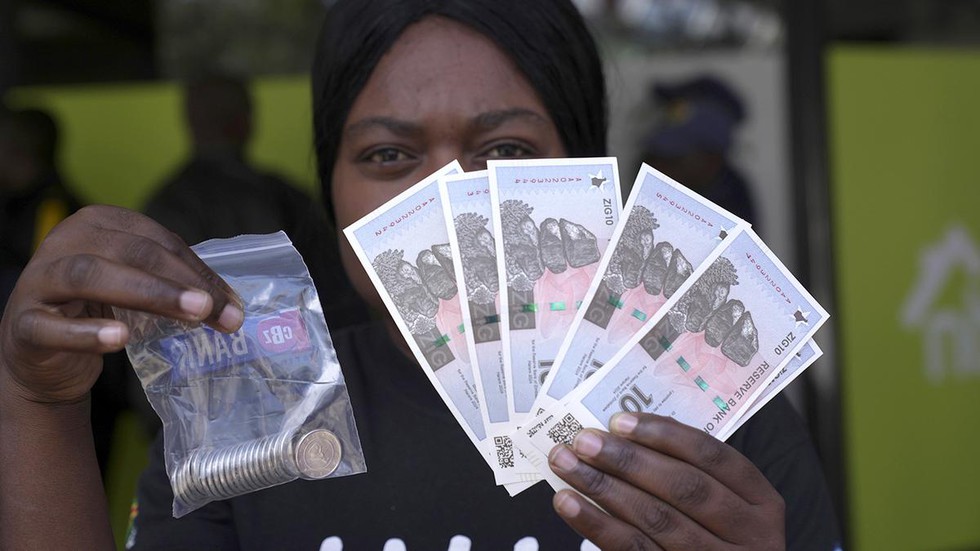
About ZiG:
- The Zimbabwe Gold (ZiG) is a new gold-backed currency launched by Zimbabwe.
- The ZiG, now the sixth currency used by Zimbabwe, has been in circulation since April 5, 2024.
- Key features of ZiG
- The ZiG stands out as a new currency backed by gold reserves, ensuring its value is supported by the physical gold held by the government.
- ZiG notes and coins will be available and issued in denominations: 1ZiG, 2ZiG, 5ZiG, 10ZiG, 20Zig, 50ZiG, 100ZiG and 200ZiG, with the gold backing aims to provide stability and prevent currency devaluation.
- Reasons for launching a new currency
- Zimbabwe has grappled with high inflation, with rates surpassing 500% in recent years.
- Consequently, the Zimbabwean dollar, introduced in 1980, lost its value due to Following this, the country relied on various currencies, primarily the US dollar, leading to limited control over its economy.
- The collapse of the Zimbabwean dollar in 2009, with hyperinflation peaking at 5 billion per cent, marked one of the most severe currency crashes in history.
- Banks in Zimbabwe have been converting the previous national currency, the Zimbabwe dollar, into ZiGs, aiming to promote simplicity, certainty, and predictability in monetary and financial matters.
Prelims Pointers
May 28, 2024

About Oedocladium sahyadricum:
- It is a new algal species and it is named as Oedocladium sahyadricum.
- The name ‘sahyadricum’ refers to the Western Ghats, also known as Sahyadri, which is rich in plant diversity and provides ideal conditions for the growth of terrestrial microalgae.
- Features
- It is dioecious and terrestrial, having a superior operculum, and possessing ellipsoid oogonium and oospore.
- The alga was found as a thin mat of elongated strands on damp soil.
- The species, which looks like moss protonema, is velvety green but turns yellowish-green as it matures. Rainy weather is likely needed for its abundant growth.
- This is the first time a species in the Oedocladium category has been recorded in Kerala.
- Species of Oedocladium have potential practical applications
- In medicine, agriculture and in the production of a natural pigment, astaxanthin which is well-documented for its unique biological activities and health benefits.
- Algae plays a significant role in ecosystems and has enormous economic importance in the world market, from high-value products to wastewater treatment.
Prelims Pointers
May 28, 2024
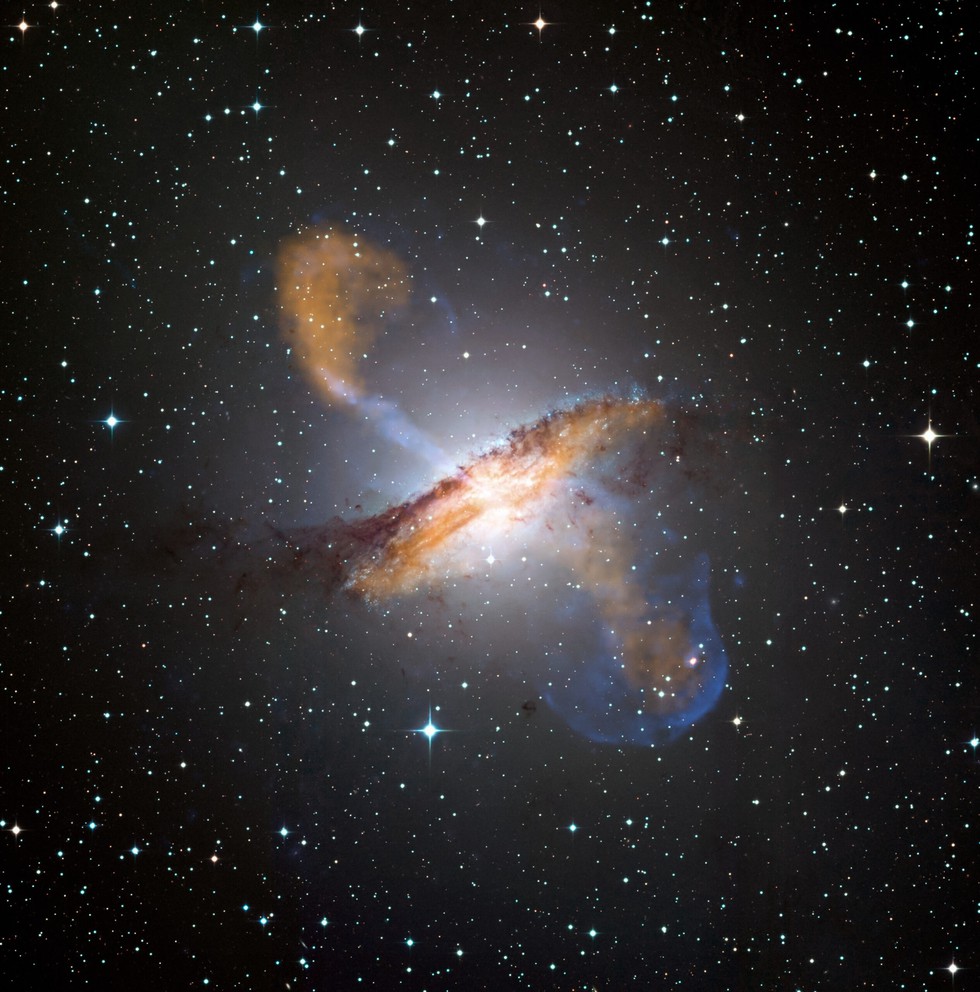
About Astronomical transients:
- In astronomy, a ‘transient’ is any celestial object whose brightness changes in short spans of time.
- There are many kinds of astronomical transients, all of them united by phenomena that are violent in some measure.
- Astronomers study transients to understand where their violence comes from and what that can tell us about non-transient events.
- Examples of transients
- Supernovae: When the outer layers of large stars blow up while their cores implode because the stars have run out of elements to fuse. Many a supernova has been known to become so bright that it emits light more intensely than the stars in the rest of its host galaxy combined.
- Active Galactic nucleus (AGN): The centres of massive galaxies host supermassive black holes. Sometimes, these black holes actively feast on matter in their orbit. Interactions between the black holes and the matter in this process cause the latter to acquire energy and glow with changing brightness.
- Fast Radio Burst (FRB): It was discovered in 2007 and it can emit more than 10 times as much energy as the Sun in a few milliseconds.
Prelims Pointers
May 28, 2024

About Business Responsibility and Sustainability Reporting Initiative:
- It is a mandatory disclosure mechanism for top 1000 listed companies or businesses to report their performance on environmental, social and governance (ESG) aspects and demonstrate their commitment to responsible business practices.
- It was introduced in May 2021 by the Securities and Exchange Board of India (SEBI).
- This initiative was intended to provide policymakers and investors with robust data to make informed decisions.
- The disclosure requirements are grouped into nine core categories, based on the principles of the National Guidelines for Responsible Business Conduct introduced by SEBI:
- Environmental protection: Key performance indicators cover electricity consumption, water usage and air emissions.
- Human rights: Focus on human rights violations and minimum and fair wages.
- Integrity: Performance indicators include anti-corruption, anti-bribery and conflicts of interest policies.
- Employee well-being: Metrics focused on parental benefits, employee accessibility and the percentage of unionized workers.
- Inclusive growth: Policies favouring vulnerable and marginalized groups.
- Sustainable goods and services: Information on investments in social and environmental impacts.
- Responsible consumer engagement: KPIs encompass handling consumer complaints and feedback, product recall procedures and cybersecurity and data privacy policies.
- Stakeholder responsiveness: Describing engagement with vulnerable and marginalized groups.
- Responsible public policy engagement: Listing trade and industry affiliations and detailing issues relating to anticompetitive conduct.
Prelims Pointers
May 28, 2024
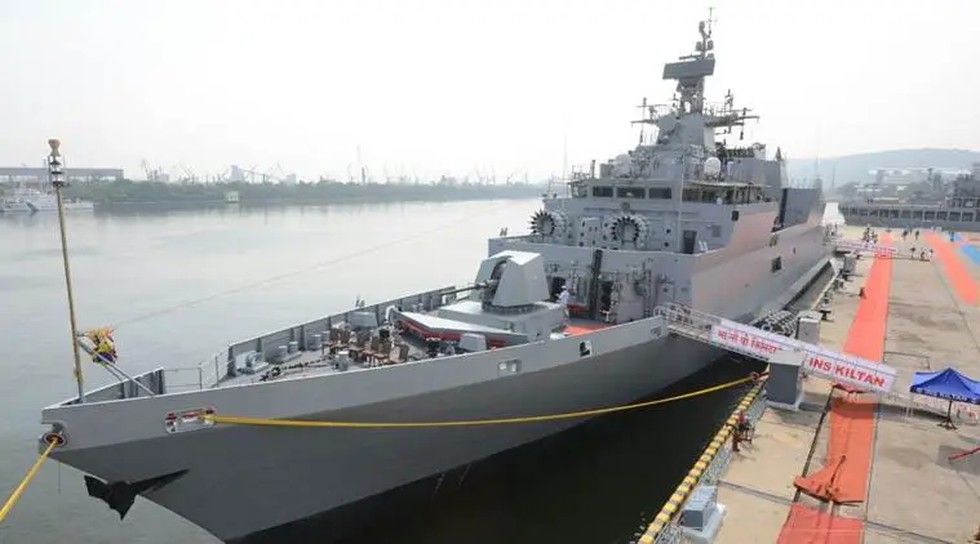
About INS Kiltan:
- It is an indigenously-built anti-submarine warfare stealth corvette.
- This is the third of the four Kamorta-class corvettes being built under Project 28.
- The ship derives its name from one of the islands in Aminidivi group of the strategically located Lakshadweep and Minicoy group of islands.
- Designed by the Indian Navy’s in-house organisation Directorate of Naval Design and built by Garden Reach Shipbuilders & Engineers (GRSE) in Kolkata.
- Features
- It is India’s first major warship to have a superstructure of carbon fibre composite material resulting in improved stealth features, lower top weight and maintenance costs.
- The ship hosts a predominantly indigenous cutting-edge weapons and sensors suite which includes heavyweight torpedoes, ASW rockets, 76 mm caliber Medium Range gun and two multi-barrel 30 mm guns as close-in-weapon system (CIWS) with dedicated fire control systems, missile decoy rockets (Chaff), advanced ESM (Electronic Support Measure) system, most advanced bow mounted sonar and air surveillance radar.

